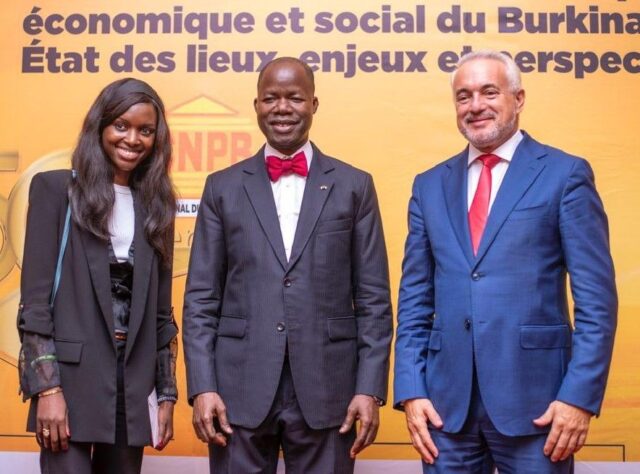The Fashion Industry Target Consultation, an initiative by United Nations Environment Programme and Global Fashion Agenda is inviting stakeholders across the fashion value chain to share insights on how to meet climate goals.

In brief
- Fashion Industry Target Consultation is inviting stakeholders across the fashion value chain to share insights on existing and new targets to transition towards a net-positive industry
- More ‘plug and play’ financing structures to increase funding for the industry are needed according to Apparel Impact Institute president
- The need to also improve social conditions among textile manufacturers highlighted by impact investment firm FOUNT
United Nations Environment Programme (UNEP) and the non-profit Global Fashion Agenda (GFA) have launched the Fashion Industry Target Consultation to agree on targets to help the fashion sector transition towards a net-positive industry.
The GFA and UNEP are inviting stakeholders and partners from across the global value chain, including brands, retailers, policymakers and others, to share their insights on the goals that the industry must work to meet, and to gauge what tools and support are needed by different actors to take action.
The consultation has been launched in recognition of the need for a multi-stakeholder approach to building common targets in order to reduce the industry’s impact and create positive social and environmental contributions.
Bernadette Blom and Bob Assenberg, partners at impact investment firm FOUNT, which manages the Good Fashion Fund, said they were aware of the consultation and that several such initiatives were underway focusing on the fashion industry and how different actors could cooperate to prioritise environmental and social sustainability across the whole value chain.
Blom said: “Although this will certainly remain a challenge in the coming years, we agree that a transformation of the sector will need all stakeholders to cooperate and prioritise reducing the environmental and social footprint of the fashion industry.”
Responding to questions from Impact Investor from COP27, Lewis Perkins, president of the Apparel Impact Institute, which manages the Fashion Climate Fund, agreed. He said multiple industry stakeholders would also have to work together to provide the financing needed to meet the industry’s carbon reduction targets: “It will take a coordinated effort from philanthropy, government, and the private sector in order to provide the right mix of funding to meet climate goals.”
Going beyond words
According to the Ellen MacArthur Foundation, the fashion and textiles industry employs more than 300 million people across the global value chain. UNEP and GFA say that while these jobs support vital livelihoods, significant social and labour risks for workers remain. In addition, research from the GFA and McKinsey & Company found that if the fashion industry continues on its current trajectory, it will fall short of the decarbonisation targets required to conform with the 1.5°C pathway by 50%.
Blom and Assenberg highlighted the importance of turning words into action: “We feel it is important that all these stakeholders, including the brands go beyond words, and actually support manufacturers in their supply chains to become more sustainable.”
One example given by Blom was that brands might consider using long-term offtake contracts with their suppliers, a type of legal contract between two parties wherein the buyer undertakes to buy all or some portion of the manufacturer’s future production. This, said Blom, would give the manufacturer more stable and predictable revenues and allow them to make longer term, more sustainable investment decisions.
“The Good Fashion Fund showcases how long-term investments can make SME apparel manufacturers more sustainable by allowing them to invest in impact technology. These types of investment are both financially and practically feasible and benefit the industry. Making the manufacturer more sustainable also has a cost benefit through water, energy or chemical reductions as well as efficiency gains,” she said.
Blom and Assenberg also highlighted the need to improve social conditions among textile manufacturers and said that brands were increasingly feeling the pressure as consumers demanded more transparency on the labour conditions within their supply chains.
‘Plug and play’ financing solutions
The widely reported Grantham Research Institute report, which was presented at the start of COP27 and called for international investments of $1trn annually by 2030 in climate action for developing countries, highlighted the need for more ‘plug and play’ financing structures to increase funding, which Perkins said were also needed in the fashion sector.
“There needs to be more ‘plug and play’ financing structures that make it easy to identify projects and that come with built-in components of risk reduction and risk sharing for developing countries, companies, and industries, and in our case, the apparel and footwear industry,” said Perkins. “Lower cost/higher-risk concessionary finance from private philanthropy, development banks, carbon offset markets, loan-guarantee funds, etc, is needed to de-risk solutions and get them ready for private sector investment.”
Blom and Assenberg also highlighted the need for longer term investments and “not just programme-based short-term investments and donor money.”
The consultation, which will draw on the expertise of the broader network of the United Nations throughout the process, builds on UNEP’s upcoming report; Sustainability and Circularity in the Textile Value Chain: A global roadmap and GFA’s recent GFA Monitor report, which set out the priorities and actions all key stakeholders can take towards transforming the industry.
Existing targets will be converged according to the priorities of the GFA’s Fashion CEO Agenda, a guide for fashion leaders to future-proof their companies focusing on opportunities for environmental and social impact. The priorities include respectful and secure work environments, better wage systems, resource stewardship, smart material choices and circular systems. New targets will be sought in areas that are not currently covered including criteria for purchasing practices and circular design.
The consultation will consist of an online survey and regional workshops hosted by UNEP in Latin America and the Caribbean, West Asia, Asia Pacific, and Africa.





